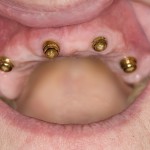
The use of dental implants has demonstrated good success rates and is an increasingly common dental procedure. Osseointegration is an important aspect of implant success and stability and studies suggest that photobiomodulation can alleviate inflammation and pain and promote healing. Photobiomodulation therapy (PBMT) is also known as low-level laser therapy and considered to be a type non-invasive and nonthermal therapy based on non-ionising light sources, including lasers, light-emitting diodes (LEDs), and broadband light, in the visible and infrared spectrum
The aim of this review was to assess whether PBMT improves implant stability and success rate.
Methods
Searches were conducted in the PubMed, Embase, And Cochrane Controlled Register of Trials (CENTRAL) databases. This was supplemented by a hand search of the journals, Lasers in Medical Science; The International Journal of Oral and Maxillofacial Implants; The Journal of the American Dental Association; Journal of Oral and Maxillofacial Surgery; Journal of Periodontology; Photomedicine & Laser Surgery, and The Journal of Prosthetic Dentistry.
Randomised controlled trials (RCTs) and quasi-RCTs reporting the effects of PBMT on implant stability and/or implant success rate in humans were considered. Two reviewers independently screened and selected studies extracted data and assessed risk of bias using the Cochrane tool. Disagreements were resolved by discussion with a third reviewer. Mean differences (MD) and 95% confidence intervals (CI) were used to assess implant stability and risk ratios (RR) and 95% CI for implant success.
Results
- 8 studies involving a total of 126 patients were included.
- 4 studies were considered to be at low risk of bias 4 at moderate risk
- 3 studies were conducted in Turkey, 2 in Iran and one each in Brazil, Egypt and Serbia.
- 5 used continuous wave low level lasers, 2 used LED and one low level laser or LED.
- The wavelength of the PBMT varied from 618 nm to 940nm with power output ranging from 20mW to 1700 mW.
- implant success rates and implant stability measured at days 0 and 10, and at 3, 4, 6, and 12 weeks were considered.
- No significant differences were seen between the PBMT group and the control group regarding implant stability or success rate.
Conclusions
The authors concluded: –
Several animal studies have indicated that PBMT could facilitate hard and soft tissue regeneration, promote osseointegration, and improve implant stability, however, existing clinical studies do not support the satisfactory effect of PBMT on implant stability or the success rate in humans. Due to limitations of current study, additional high-quality human clinical trials are required to verify the data for a more convincing conclusion.
Comments
The authors have searched 3 major databases for this review identifying 8 RCTs. However, all the included studies are small with sample sizes ranging from 8 – 25 patients. There was also variation in the type of PBMT used and the protocols applied with the reviews authors highlighting that there needs to be more detailed information provided about treatment protocols in future studies. In addition, the follow-up times are also relatively short ranging from 6 weeks to six months. Given the good long-term survival data on dental implants the finding of no different between the PBMT group and controls is hardly surprising. High quality, well conducted and reported RCTs of appropriate size are needed to assess whether PBMT has any beneficial effect.
Links
Primary Paper
Chen Y, Liu C, Chen X, Mo A. Clinical evidence of photobiomodulation therapy (PBMT) on implant stability and success: a systematic review and meta-analysis. BMC Oral Health. 2019 May 7;19(1):77. doi: 10.1186/s12903-019-0779-4. PubMed PMID: 31064350; PubMed Central PMCID: PMC6505209.
